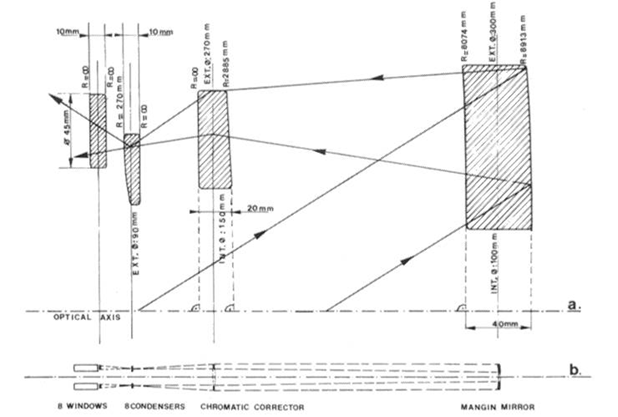Hi everyone
I’m trying out this forum for the first time! I am also relatively new to Zemax optics studio so please forgive me if any of this is out of context or obvious for the more experienced users. The question is if someone could give me some pointers on how to best model and optimise a Cherenkov Radiation Telescope. For those not familiar with the system the detector is used to identify particles by detecting the Cerenkov cone of light emitted at a precise angle by particles of a specific rest mass. The core components of the system are a Mangin mirror and a chromatic corrector that focus a ring of light in the image plane. See sketch below

It is not obvious to me what would the best way to build this system in zemax and, given that you end up with a ring instead of a spot, what would be the best way to optimise it. Is it maybe better/possible to start with a 2d system and work the way up to the 3D telescope?
Anyway, let me know if you need further input. I’m looking forward to hear any suggestions
Thanks in advance





